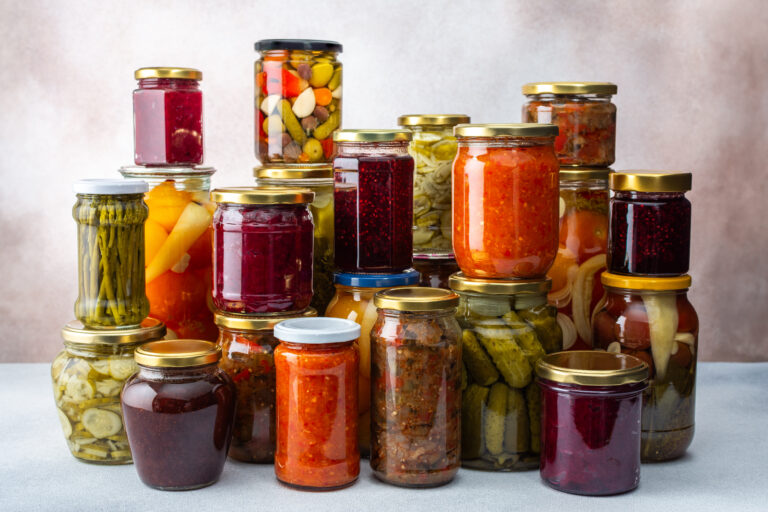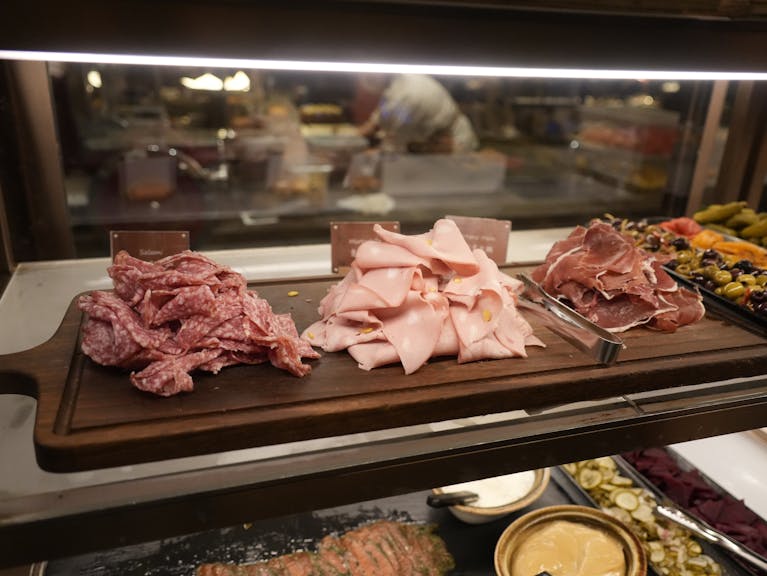5 Proper Meat Storage Tips to Keep Your Food Safe
Proper meat storage is crucial for safety and flavor. Understand different meats, use correct temperatures, and invest in equipment for freshness.

Storing meat correctly isn’t just about keeping it fresh; it’s crucial for your health and safety. By mastering proper meat storage techniques, you can extend shelf life and prevent foodborne illnesses.
Disclosure: As an Amazon Associate, this site earns from qualifying purchases. Thank you!
Understanding Different Types of Meat

Storing different types of meat correctly is crucial for maintaining quality and safety. Here’s what you need to know:
Storing Beef and Pork
Refrigerate beef and pork at or below 40°F. Use within 3-5 days. For longer storage, freeze at 0°F. Wrap tightly in butcher paper or vacuum seal to prevent freezer burn. Thaw in the refrigerator.
Storing Poultry
Keep poultry at or below 40°F. Use chicken within 1-2 days. Freeze for up to a year for whole birds, and nine months for parts. Use airtight packaging to retain moisture and quality. Avoid leaving at room temperature.
Storing Fish and Seafood
Store fish and seafood at 32°F. Consume within 2 days. For freezing, use vacuum-sealed bags to prevent oxidation. Shellfish can be kept alive in a bowl, covered with a damp cloth, in the refrigerator. Thaw slowly for the best texture.
Essential Equipment for Meat Storage

Investing in the right tools is key to preserving meat’s quality and safety.
Types of Refrigerators and Freezers
Different refrigerators and freezers serve unique needs.
- Standard Refrigerators: Ideal for short-term storage, keeping meat fresh for a few days.
- Chest Freezers: Best for long-term storage. They maintain a consistent temperature and prevent freezer burn.
- Commercial Units: Suitable for storing large quantities. These units come with advanced temperature controls.
Using Vacuum Sealers for Longer Freshness
Vacuum sealers are vital for keeping meat fresh.
- Extend Shelf Life: Removing air reduces oxidation and spoilage.
- Prevent Freezer Burn: Air-tight seals protect meat texture and flavor.
- Efficient Organization: Vacuum-sealed bags take up less space, making your freezer more organized.
Importance of Thermometers in Meat Storage
Thermometers ensure meat is stored at safe temperatures.
- Refrigerator Thermometers: Keep temperatures at or below 40°F (4°C).
- Freezer Thermometers: Ensure the freezer is at 0°F (-18°C) or lower.
- Instant-Read Thermometers: Used to verify meat’s internal temperature during storage and before cooking.
Short-Term Meat Storage Tips
Follow these tips to keep your meat fresh and safe for short periods.
Refrigeration Best Practices
Keep your fridge at or below 40°F. Store meat on the bottom shelf to avoid drips. Use airtight containers or plastic wrap to reduce exposure to air.
Handling Raw Meat Safely
Always wash your hands before and after handling raw meat. Use separate cutting boards for meat and other foods. Thoroughly clean knives, utensils, and surfaces after contact with raw meat.
Tips for Avoiding Cross-Contamination
Never place cooked meat on a plate that holds raw meat. Store raw meat away from ready-to-eat foods. Use a meat thermometer to ensure meats are cooked to safe internal temperatures.
In the video, Living Well With Dr. Michelle explains –
Living Well With Dr. Michelle
- Focus on Short-Term Needs: Short-term food storage should include foods that you typically eat on a regular basis and can easily consume without extensive preparation.
- Importance of Rotation: Unlike long-term storage, short-term food items need to be rotated within a couple of years to ensure freshness and usability.
- Affordability Tips: Look for discounts on bulk purchases and consider store-brand items or case lot sales to make food storage more affordable.
- Buying in Bulk: Buying in bulk from stores like Winco or Macy’s can save money and ensure you have enough supplies on hand.
- Creative Storage Solutions: Utilize spaces creatively for storage, such as under beds or in closets, to accommodate your food supplies even in small living spaces.
- Variety is Key: Ensure you have a variety of foods stored to avoid monotony during emergencies. Include home-canned goods, dried foods, and even treats for morale.
- High-Energy Foods: Include high-energy foods rich in protein and fats like peanut butter or beef stew to sustain energy levels during emergencies.
- Mental Foods: Store treats or comfort foods to boost morale during stressful times, even if they aren’t typically part of your daily diet.
- Preparation for Short-Term Emergencies: Short-term food storage is crucial not only for natural disasters but also for financial hardships like job layoffs.
- Next Steps: Prepare for long-term food storage as the next step after establishing your short-term supplies.
Long-Term Meat Storage Strategies
Learn how to keep meat fresh for extended periods using proven storage techniques.
Freezing Meat the Right Way
Freeze meat quickly to preserve quality. Set your freezer to 0°F or lower. Spread pieces out initially before stacking to avoid uneven freezing. This ensures that the meat stays safe and retains a good texture.
How to Wrap Meat for Freezing
Use vacuum-sealed bags for the best results. If you don’t have a vacuum sealer, tightly wrap meat in plastic wrap and then aluminum foil. Label each package with the date for easy inventory management.
Thawing Meat Safely
Thaw meat in the fridge, not on the counter. This prevents bacteria growth. For quicker thawing, submerge sealed packages in cold water, changing the water every 30 minutes. Always cook meat immediately after thawing in water.
Monitoring and Maintaining Meat Quality

Keeping your meat in top shape is crucial for both taste and safety. Here’s how you can ensure quality:
Recognizing Signs of Spoilage
Identify spoilage signs promptly to avoid health risks. Look for color changes, slimy textures, and off odors. Fresh meat should have a consistent color and be firm to the touch.
Regular Check-ups on Storage Equipment
Ensure your storage equipment functions correctly. Regularly check thermometer readings to maintain optimal temperatures. Clean refrigerators and freezers with a mild sanitizer to prevent bacteria buildup.
Adjusting Storage Methods Based on Seasonal Changes
Adapt your storage methods to the seasons. During warmer months, minimize opening fridge doors to maintain cool temperatures. In winter, ensure your freezer isn’t overstuffed to allow proper air circulation.
Advanced Meat Storage Techniques

Level up your meat storage game with these advanced techniques for ensuring freshness and flavor.
Dry Aging at Home
Dry-aged meat at home to enhance its flavor. Get a dedicated fridge set between 34-38°F. Place the meat on a wire rack to ensure air circulation. Age beef cuts for 30 to 45 days for optimal results. Regularly check for mold or off-odors as indicators of spoilage. Use appropriate humidity control, around 80%, to prevent excessive drying.
Using Preservation Methods Like Salting and Smoking
Preserve meat using salting and smoking for extended shelf life and unique flavors. Salt-cure meat with a salt-to-meat ratio of about 1:16. Store in a cool, dry place for several weeks, turning occasionally. Smoke meat for several hours at 225-250°F using hickory or applewood for best results. Ensure your smokehouse maintains a consistent temperature to avoid undercooking.
Frequently Asked Questions
How should I store different types of meat in the refrigerator?
Refrigerate meat at or below 40°F. Poultry should be stored for 1-2 days, while beef and pork can last 3-5 days. Use airtight containers or plastic wrap to prevent contamination.
Can I freeze all types of meat?
Yes, all types of meat can be frozen. Wrap the meat in freezer paper or use vacuum sealers to prevent freezer burn. Label with the date to keep track of storage time.
What equipment do I need to store meat safely?
Essential equipment includes a reliable refrigerator, freezer, vacuum sealer, and food thermometers. These help ensure proper temperatures and safe storage conditions.
How can I avoid cross-contamination when storing meat?
Store different types of meat separately and use airtight containers. Clean surfaces and utensils thoroughly after handling raw meat to prevent bacterial spread.
What are the best practices for long-term meat storage?
For long-term storage, freeze meat at 0°F or lower. Use vacuum sealing to extend shelf life and prevent freezer burn. Check storage guidelines for specific meat types.
What is dry aging, and can I do it at home?
Dry aging enhances beef flavor and tenderness. At home, use a dedicated fridge with controlled temperature (34-38°F) and humidity (80-85%). This technique requires careful monitoring.
What are the benefits of salting and smoking meat?
Salting and smoking add unique flavors and extend shelf life. Proper ratios of salt and specific temperatures (cold or hot smoking) are essential for safety and taste enhancement.






